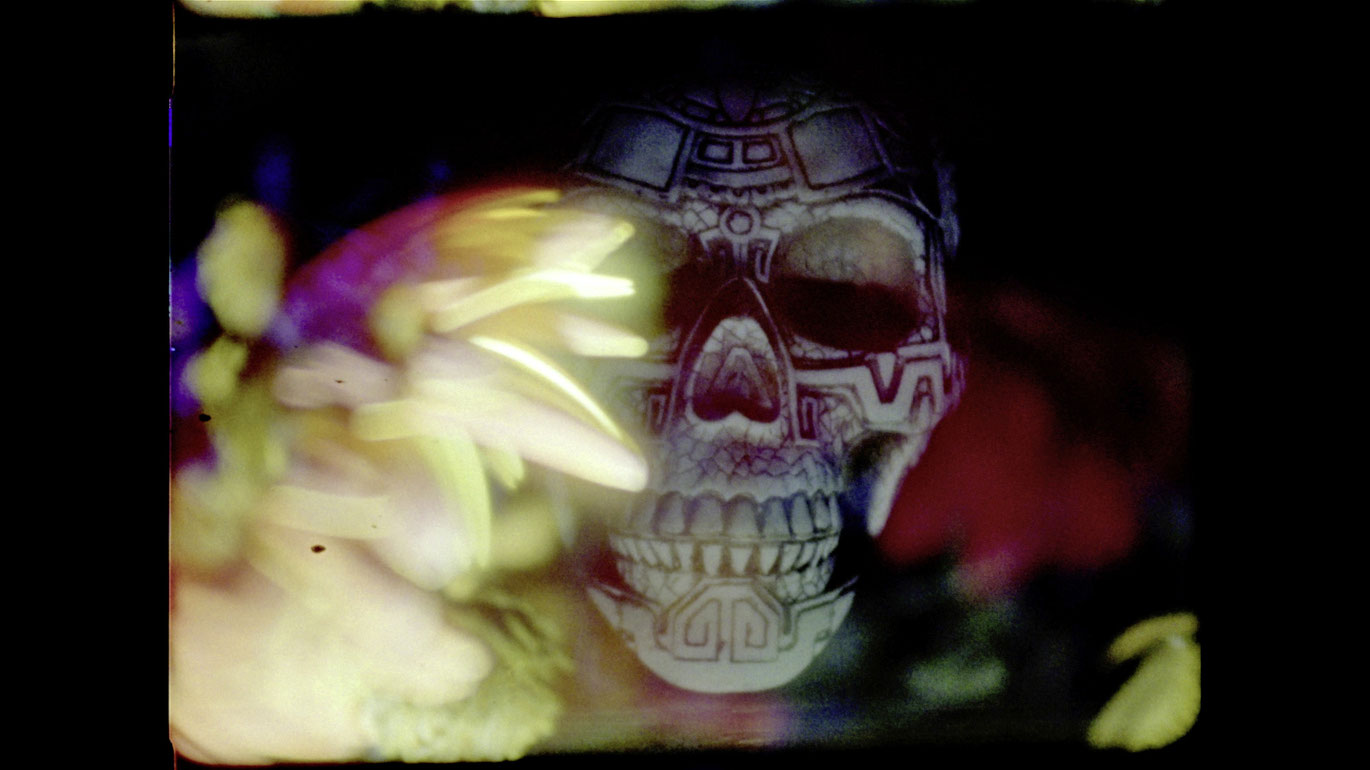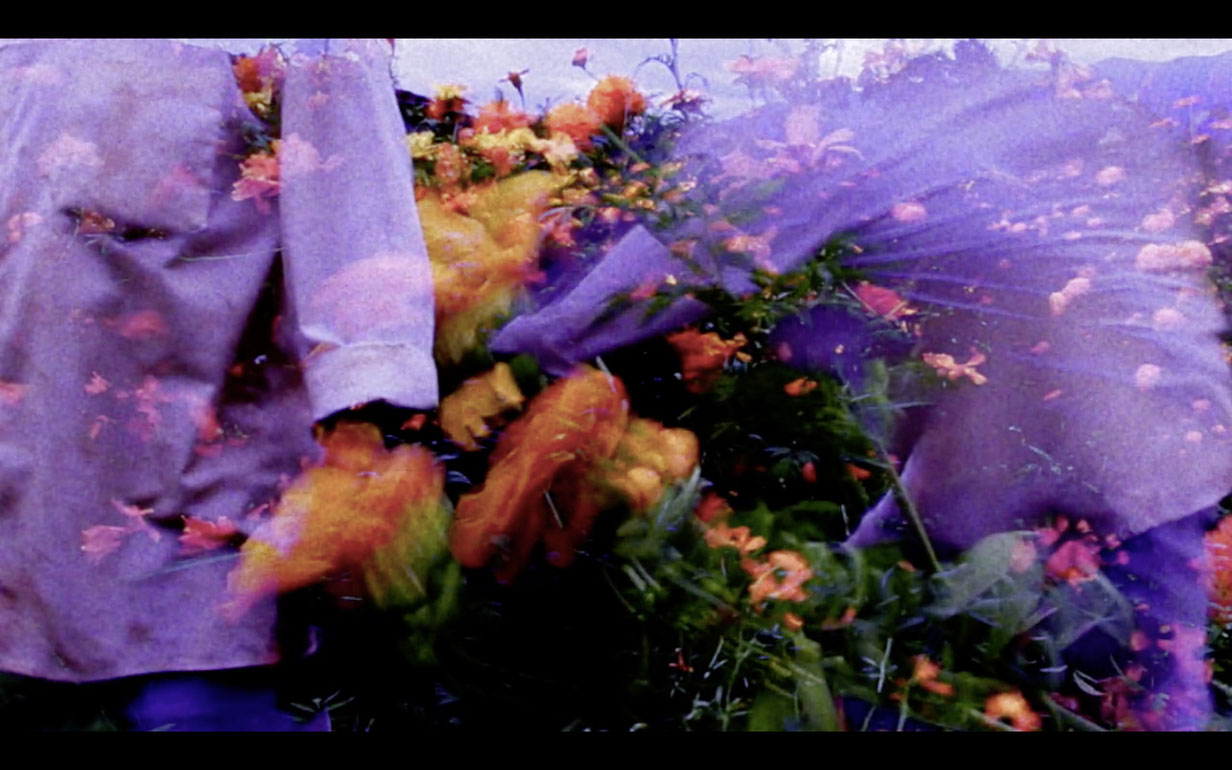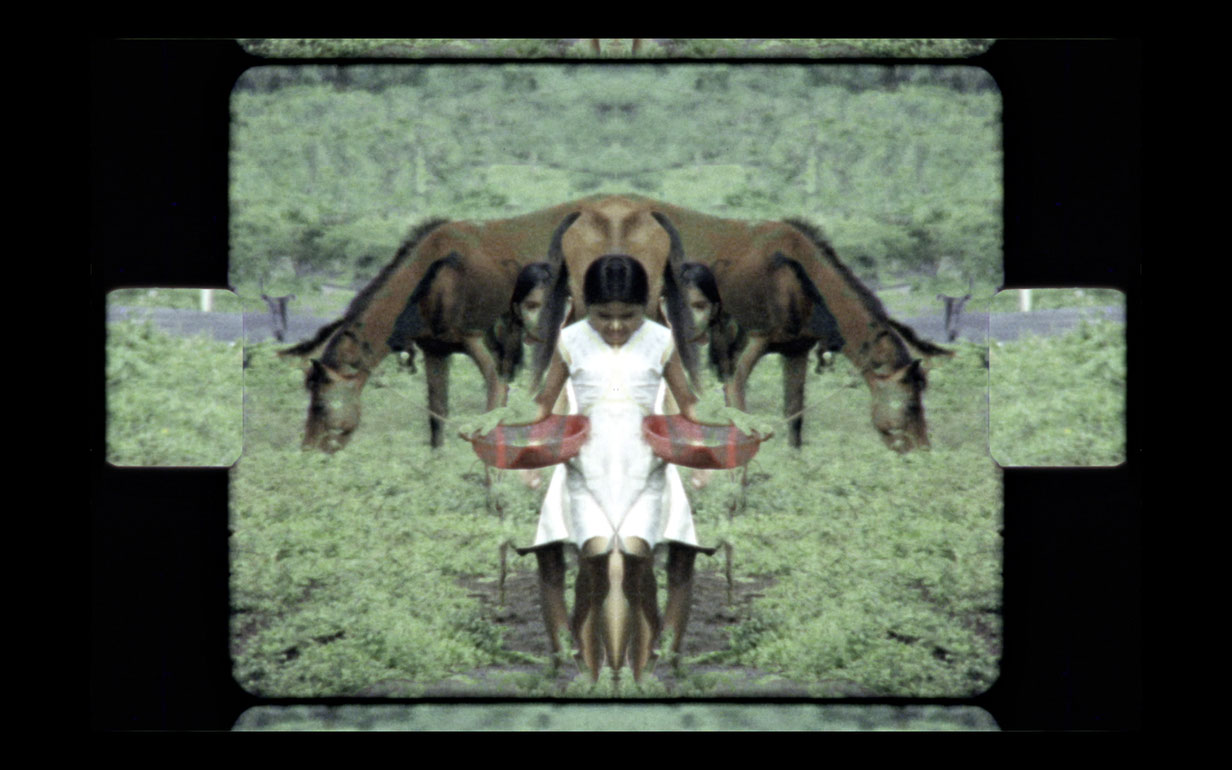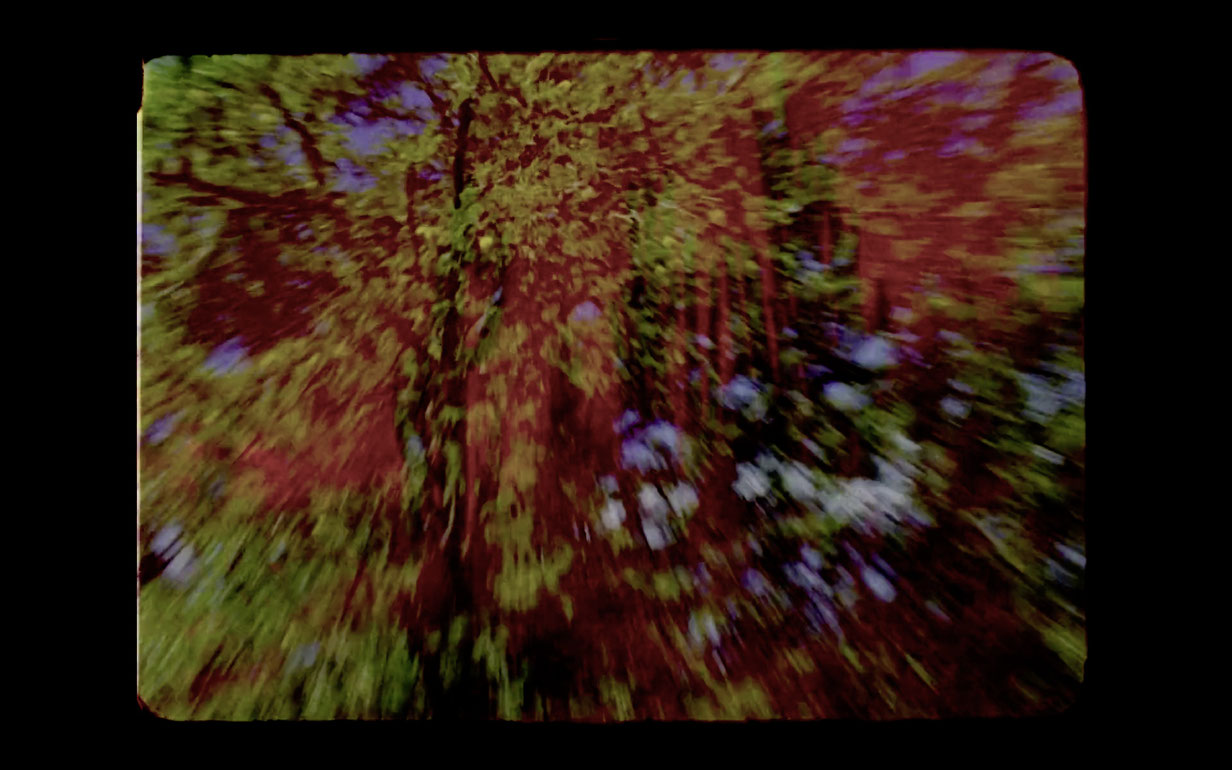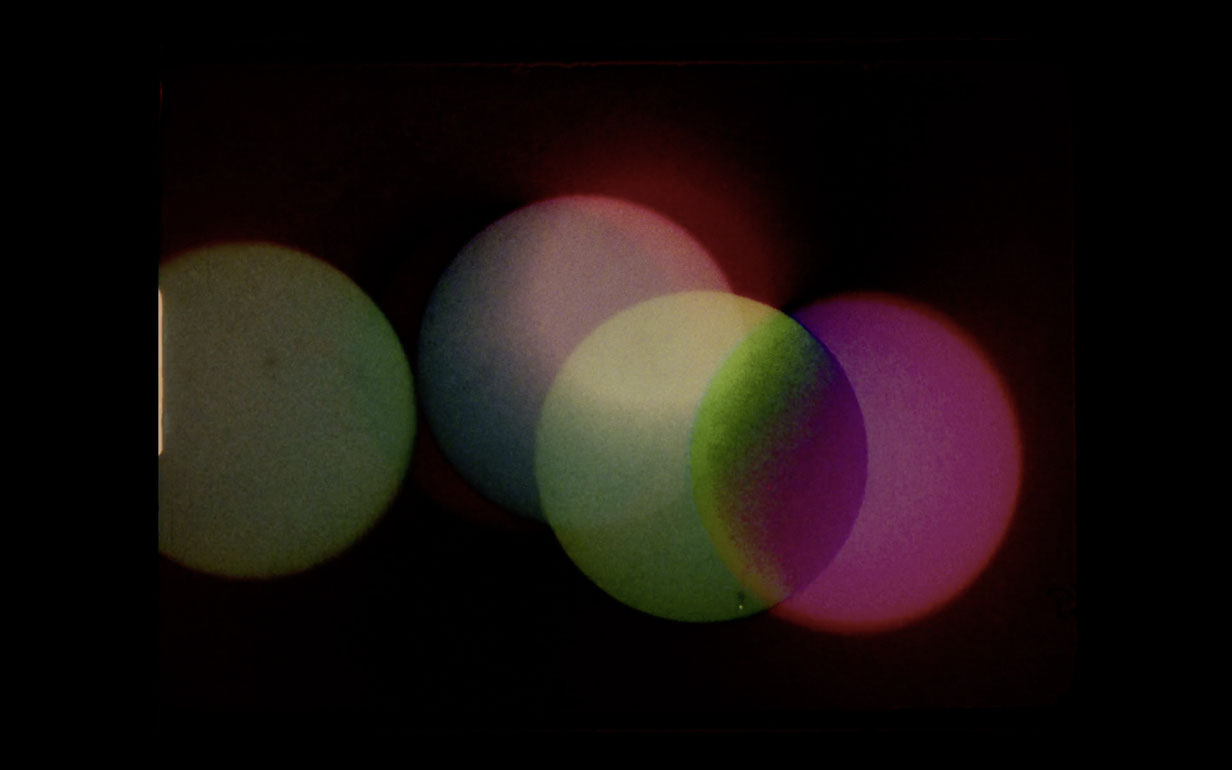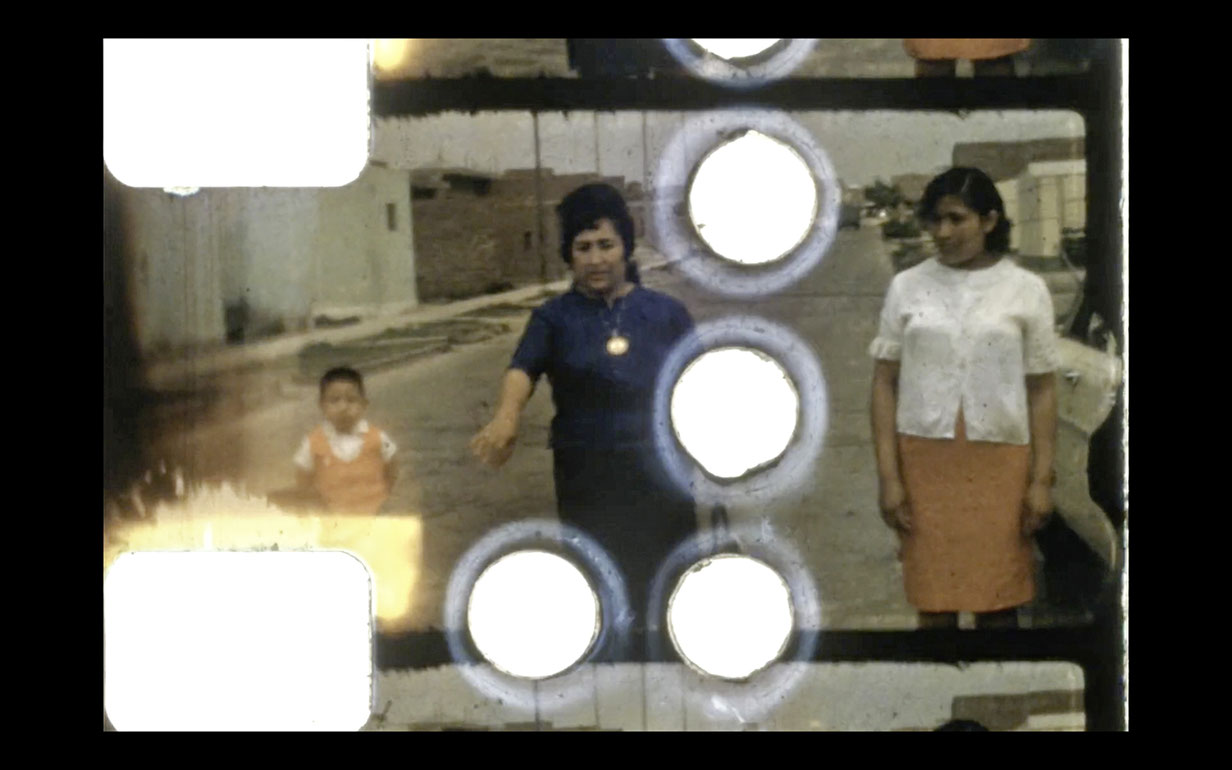Colectivo Los Ingrávidos
MONOGRAPHIE / Viennale
A cooperation between Viennale and sixpackfilm, curated by Daniela Zahlner and Dietmar Schwärzler.
Programm 1: TRANCE
with a concert/Live act by JUNG AN TAGEN
TEOCALLI, 2024, 41 min
20.10.2024, 7.00 p.m., Filmmuseum
TEOCALLI is one of the most recent productions by Los Ingrávidos, whose ever-proliferating oeuvre is based on sampling and recycling techniques. The film will be presented at the Viennale with live music by JUNG AN TAGEN; involving local musicians where their films are screened forms part of the collective’s collaborative practice.
Drawing on the characteristic visual language employed by Los Ingrávidos, which involves remixing both their own film material and found footage, TEOCALLI thus contains excerpts from their films GUERRAS FLORIDAS, DANZA SOLAR, NAHUAL and various Super 8 home movies as well as shots of a well-known mural by Diego Rivera, which shows the history of Mexico and its numerous battles against foreign rule. Recurring, speaking elements include the eye as a marker of perception and puzzle pieces.
The word Teocalli refers to an Aztec pyramid, a temple for religious rituals. While the way in which Los Ingrávidos fragment and take apart the analogue material strives for a sense of trance in line with shamanic traditions, JUNG AN TAGEN craft polyrhythmic, psychoacoustic and dissociative arrangements. Ritual and trance form the common denominator between them: a synaesthetic firework display for the eyes and ears. (Daniela Zahlner, Dietmar Schwärzler)
Programm 2: POLITICS
Extractivistas, 2016, 1 min
Coyolxauhqui, 2017, 10 min
Impressions for a Light and Sound Machine, 2014, 7 min
Has visto? / Have you seen?, 2017, 7 min
Transmission / Misframing, 2014, 4 min
Batalla, 2019, 5 min
Olympia, 2018, 7 min
After América, 2021, 7 min
Brussels, 2024, 3 min
Colonial transfer, 2020, 7 min
21.10.2024, 4.30 pm, Metro - Historischer Saal
Inspired by the historical avantgardes, Los Ingrávidos grasp their filmmaking as a sociopolitical practice which emerges via interventions into film and archive material and engagement with mythologies, agitprop and social protests. This second programme places a focus on the large number of femicides, murders and kidnappings carried out by the police and the military in Mexico while also examining the traces left behind in (Western) ways of thinking by European and American campaigns of conquest.
In Aztec mythology, COYOLXAUHQUI refers to the goddess of the moon, who was dismembered by her half-brother. After throwing her head into the air, it has orbited the Earth as the moon ever since. The film of the same name is a staccato-edited trance poem which shows that the country’s patriarchal history is already part of the cultural constructions of the advanced Indigenous civilisations. IMPRESSIONS OF A LIGHT AND SOUND MACHINE presents the insistent, intense heartbreaking, indictment Los muertos by María Rivera, which denounces how the state deals with violence against women, as well as against children, adolescents and men. HAVE YOU SEEN?, TRANSMISSION / MISFRAMING, BATALLA und OLYMPIA are all multilayered engagements, also in formal terms, with the different facets of the visual representation of the victims of such violence. HAVE YOU SEEN? brings transparencies showing the faces of missing people to the fore, while the photographs that reveals the marks of the violence inflicted on the victims can only be heard in conversation in TRANSMISSION / MISFRAMING, accompanied by a photograph of the perpetrators that is being carried by ants. BATALLA draws on the marigolds planted to honour those killed to make reference to a still-unexplained police and paramilitary attack on a training centre for primary school teachers in the small town of Iguala on September 26, 2014, during which 43 people “disappeared”. Student Aldo Gutiérrez Solano was one of their number and remains in a coma to this day; the sound of his respirator plays on the soundtrack. OLYMPIA shows archive images of the opening ceremony of Olympic Games through a circular frame, as the searching movements of the camera suggest we are seeing through the sights of a gun. On October 2, 1958, 10 days before the ceremony, paramilitary organisations and the police suppressed protests that culminated in the massacre of Tlatelolco. With agitprop elements, artificial intelligence and computer animations, AFTER AMÉRICA, BRUSSELS and COLONIAL TRANSFER condemn the influence of colonial campaigns and popular image politics on the history of Mexico as well as the lasting thought pattens these have implied. (Daniela Zahlner, Dietmar Schwärzler)
Programm 3: SHAMANIC MATERIALISM
Guerras floridas, 2021, 4 min
El Nido del Sol, 2021, 5 min
Coyote, 2023, 16 min
talk
Danza solar, 2021, 4 min
TLÁLOC, 2016, 11 min
Visión de Anáhuac, 2019, 1 min
Sensemayá, 2021, 7 min
talk
22.10.2024, 6.30 pm, Filmmuseum
The creation and experience of trance in making and watching films forms a key strategy in the political agenda of the Mexican Collectivo Los Ingrávidos. The idea of trance as a shamanic technique and form of ancestral wisdom is made manifest in their work with film and its materiality: fire and film framings, cacti and the cosmos, colours and found footage all become united in rhythm via in-camera editing or flicker effects. GUERRAS FLORIDAS, EL NIDO DEL SOL and COYOTE are three recent films shot on 16mm which take Indigenous and Mesoamerican knowledge about the land, plants and the sky as their frame of reference. In GUERRAS FLORIDAS, which was edited in camera, floral textures and a decorated skull flow into one another. The golden orange campasúchil (marigold) flowers reappear in other films too and also line the altars on the Día de Muertos, while the motif of the round disc is at once the sun, moon and a tortilla; often shown in superimpositions, they make the frames appear to flow and dance in cosmic fashion. Accompanied by accelerating drumming sounds, the “nest of the sun” extends over the film images via coloured solarisation. In COYOTE, the camera roams through fields of maize, peering through the long grass, finding distant mountains. The stop/start rhythm of the zooms and pans make plant, earth and stone appear at once near and far; observing, vigilant. A howl echoes through the forest, we are on the trail of the coyote.
In DANZA SOLAR, the circles of the sun and the moon are silent and almost abstract, like the animations from the Visual Music of the 1920s. Soon these circles become searchlights and catch sight of people in traditional Andean garb dancing on a plateau. The dance being shown is Super 8 archive material, while the (reappearing) motif of the dancing sun is shot on 16mm. TLÁLOC is the Aztec God of the rain; in the film of the same name, found footage is looped and painted over by hand. VISIÓN DE ANÁHUAC shows a ghostly view of a city from a bird’s eye perspective: Anáhuac is the Nahuatl word for “land close to water” and the name of the Aztec land which forms the site of present-day Mexico City. The soundtrack brings Anáhuac to life in uncanny fashion... or is it being set on fire? SENSEMAYÁ is a kaleidoscopic found footage trip, the titular music is by Mexican composer Silvestre Revueltas and is based on a poem by Cuban poet Nicolás Guillén—a song to kill a snake.
In the words of the Colectivo: “Shamanic materialism is a Mesoamerican spell unleashed”. (Daniela Zahlner, Dietmar Schwärzler)

